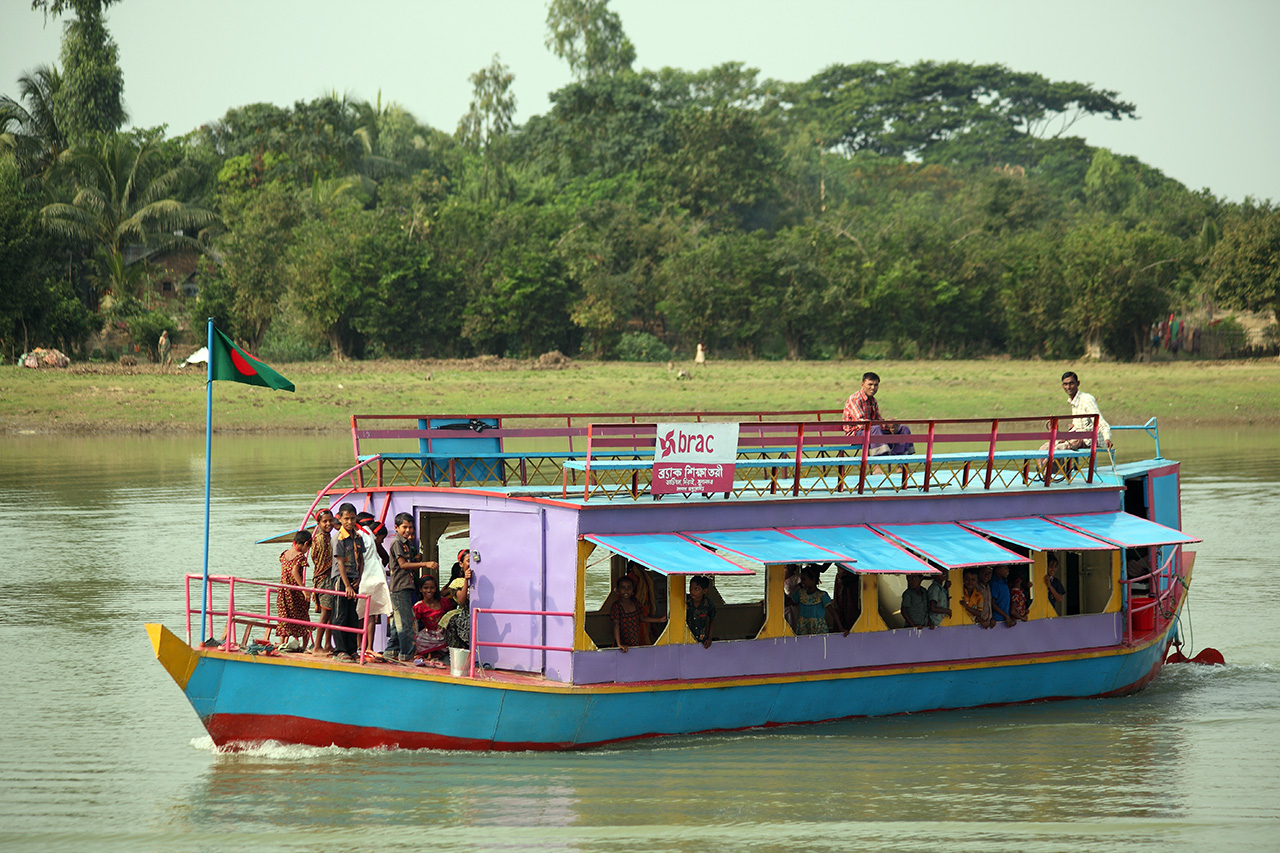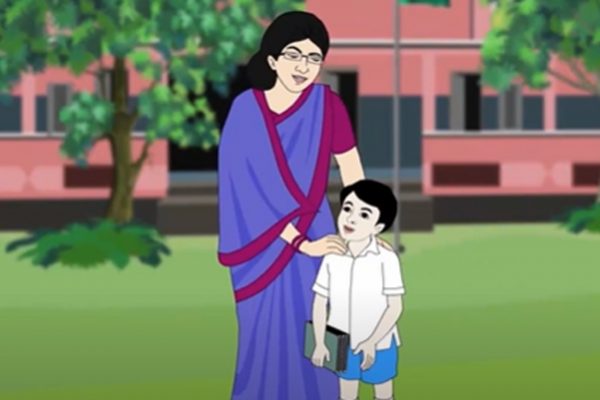Boat schools: What learning looks like at the last mile in Bangladesh
Reading Time: 3 minutes
BRAC’s boat schools were introduced with a simple philosophy: if children cannot get to school, schools will go to them.
500 boat schools have now given more than 14,000 children in the remote haor (wetland) regions of Bangladesh the opportunity to access education. A recent report indicates that the impact of these floating schools reaches far beyond the classrooms.
“How should I send my 6-year-old son to school all by himself?” asks Ramena, a 35-year-old mother, “I cannot send him alone. So I cannot do anything.”
Sending children to school is risky for Ramena and thousands of parents living in the haor (wetland) regions in Bangladesh.
The regions remain submerged for half of the year. Most schools go underwater, as do the roads that lead to them. The only mode of transportation to get to the schools that remain dry is via boats, and students are often too young to travel alone for long distances.

Bangladesh has made remarkable progress in the field of education over the last two decades. The government has expanded pre-primary and primary schools among most rural communities across the country and achieved 97% enrolment in primary schools. Gender parity is also impressive, with more girls than boys in primary and secondary schools.
Drop-out rates remain a concern in pockets like haor regions though. Over half the population in haor regions like Sunamganj are illiterate.
In 2017, BRAC’s boat schools were named as one of the 100 most innovative education projects across the world by the global education non-profit organisation, HundrED.
Here are five ways they have created an impact on students and the communities living in the regions they operate in:
1. Creating aspirations, both in and out of the classroom
In a region where less than 1% of people complete their education, almost 100% of students in boat schools complete primary education and pass national examinations.
Students of the boat schools are not only learning in the classrooms, but they are learning to dream big. A number of students received scholarships in their primary school certificate examinations, an outcome that was beyond their parents’ wildest dreams.

2. 500 teachers become role models in their communities
All of the teachers, 100% of whom are women, are recruited from their own communities. They were seen as inspirational role models among the young people of their villages.
Teachers in their own communities are especially driven to deliver their best to their students, as they are accountable to the people around them. Teachers and students formed deep bonds, as each cohort of students is taught by the same teacher throughout the five years of their primary education.
3. Students become teachers
Most of our students’ parents are not educated. For many of them, their first lessons in literacy and numeracy are from their own children.
Students of our boat schools help their parents keep track of their families’ incomes and expenditures. They also regularly read to them from from their textbooks, sharing what they have learnt.
“Our children help us calculate,” says 44-year-old Asiyara, “My husband and I are not educated, but we are so grateful that our son and daughter are now educated. They help us in so many ways, from counting, to writing our names. I am proud that our girls will be educated mothers.”

4. Floating schools of happiness inspire children to become active, creative citizens:
Students of BRAC’s boat schools develop a love for learning in an environment that is safe and joyful. Classrooms include a mini library and a science corner, with books about climate change, pollution and other issues that the world is facing today.
A rich variety of co-curricular activities spark confidence and creativity among students, through songs, recitals, dance and art projects. Group projects build leadership among students, especially girls. Students are also made aware of sensitive topics, such as menstruation and child abuse, topics that are not often discussed in their communities.
Parents share that their children regularly share with them what they learn in school.
5. Schools change culture
Even though the boat schools were created solely to deliver education to the most disadvantaged children, they also serve the wider community.
Regular meetings with parents, guardians and teachers discuss social issues that affect communities. The families of students in boat schools are increasingly more aware of the dangers of issues such as dowries, child marriage, child trafficking and child sexual abuse.
BRAC, in partnership with Educate A Child and its strategic partners, DFID and DFAT, introduced boat schools in 2012 in hard-to-reach regions across Bangladesh.
Zaian F Chowdhury is the communications portfolio lead for learning and innovation at BRAC Communications.





